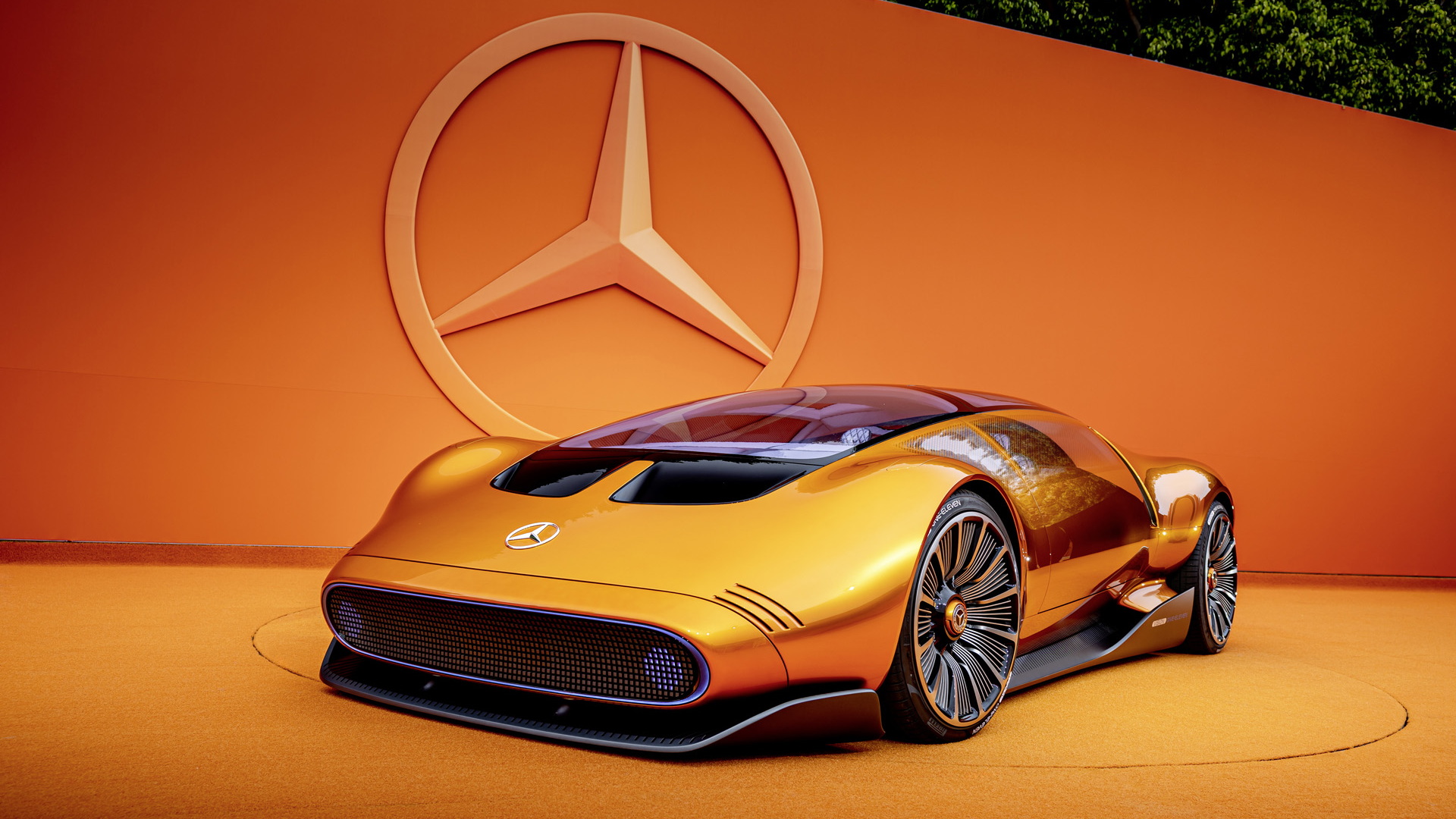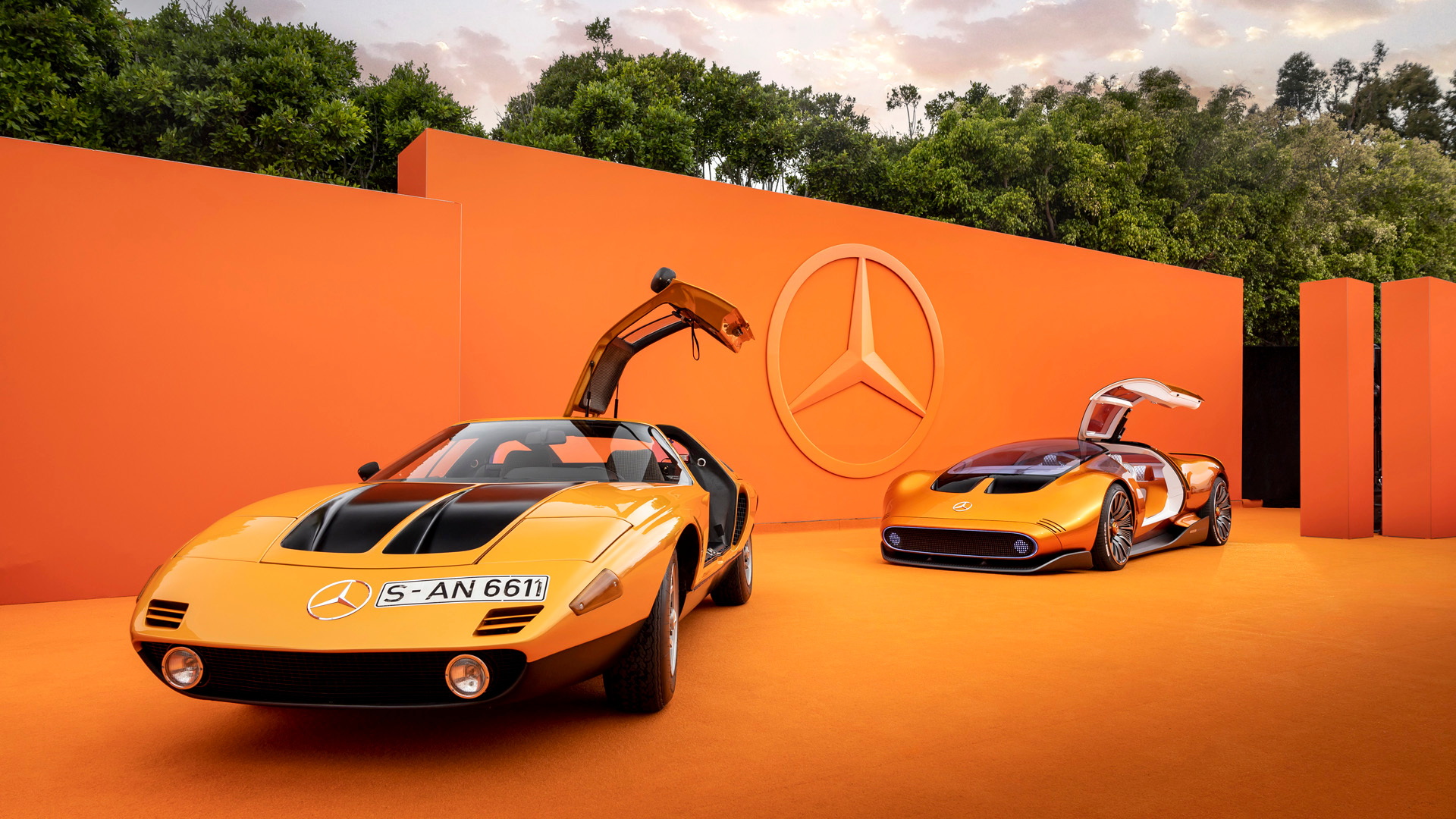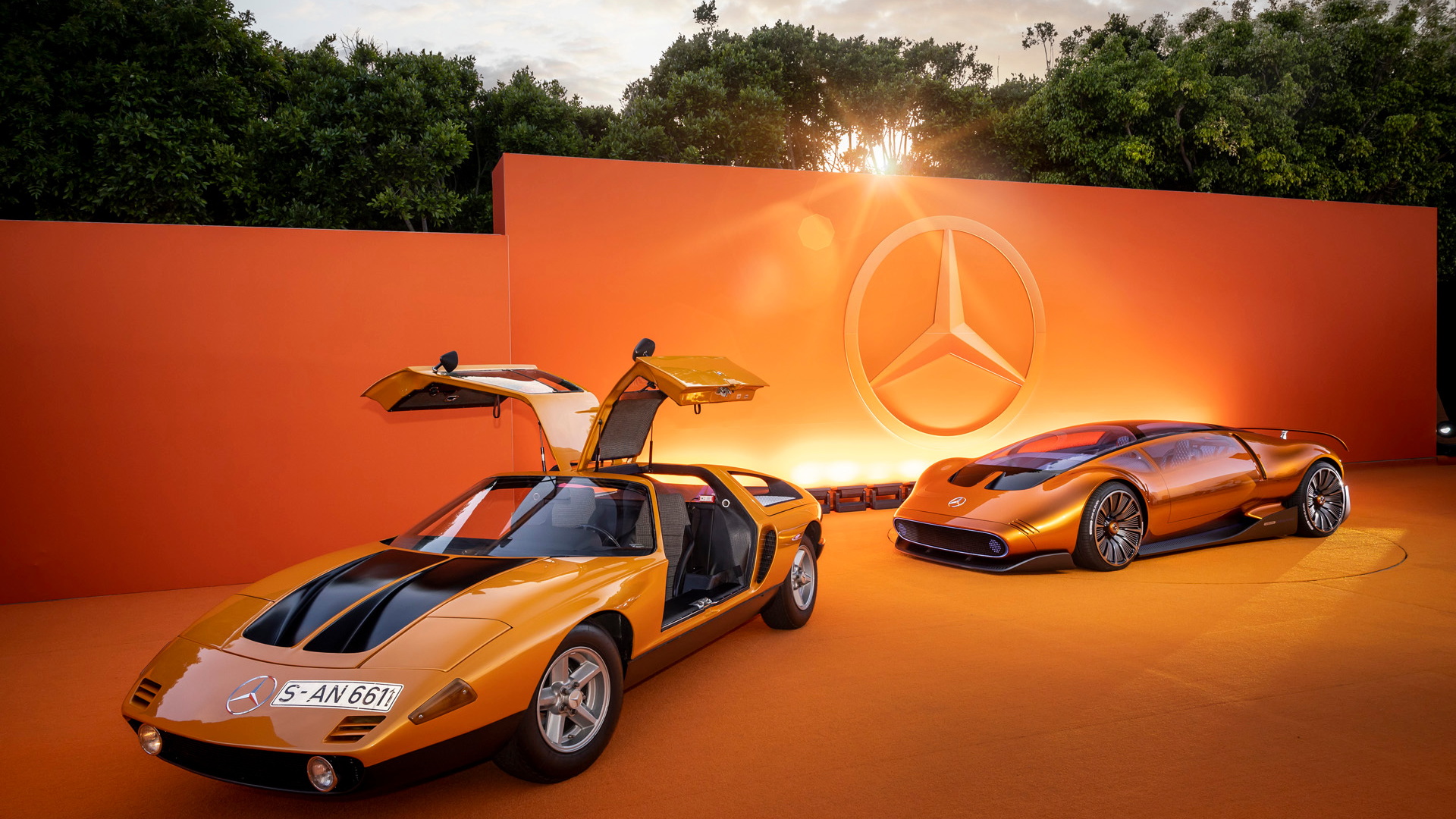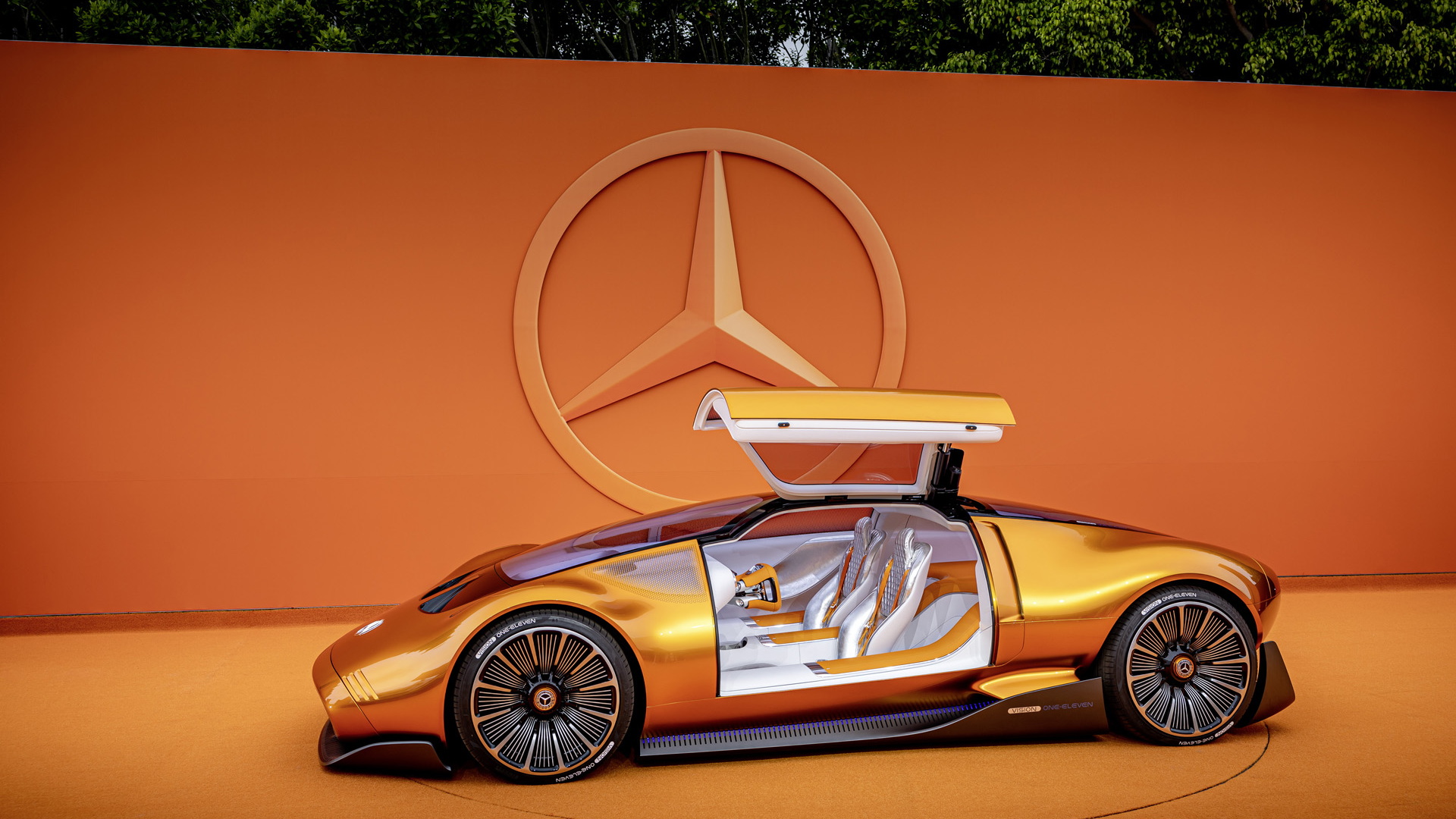During the 1970s, Mercedes-Benz rolled out a series of supercar concepts all named the C111, which served as testbeds for various technologies spanning everything from powertrains to lightweight construction to aerodynamic design.
More than a dozen were built, with some of the later C111 concepts used to set various records during high-speed testing at Italy's Nardo test track. The final concept, the C111/IV, featured a 4.8-liter V-8 rated at 493 hp. It managed to reach a top speed of 251 mph during testing in 1979.
Mercedes has now revived the series with the Vision One-Eleven concept. Unveiled on Thursday, the concept eschews the internal-combustion engine of its predecessors in favor of the latest in electric vehicle powertrain technology.
Mercedes is short on details but confirmed the powertrain consists of a pair of axial-flux motors developed by YASA, an expert at high-performance electric motors that Mercedes acquired in 2021. Axial-flux motors are both lighter and smaller than a conventional radial-flux motor of similar output. However, manufacturing axial-flux motors is more difficult, making them a lot less cost-effective. Mercedes plans to build axial-flux motors at a plant in Berlin, with the first application likely to be a dedicated EV from AMG due around the middle of the decade.
The Vision One-Eleven is also confirmed by Mercedes to feature a new design for its battery. It features liquid cooling and uses cylindrical cells with a chemistry similar to what's found in Formula 1. In developing the battery, Mercedes leaned on its Mercedes-AMG High Performance Powertrain division which builds the powertrains for the Mercedes F1 team.
“The Mercedes-Benz Vision One-Eleven combines breathtaking design with groundbreaking powertrain technology,” Markus Schäfer, Mercedes' chief technology officer, said in a statement. “Like its historical namesake, it explores new paths for the future of sporting performance.”
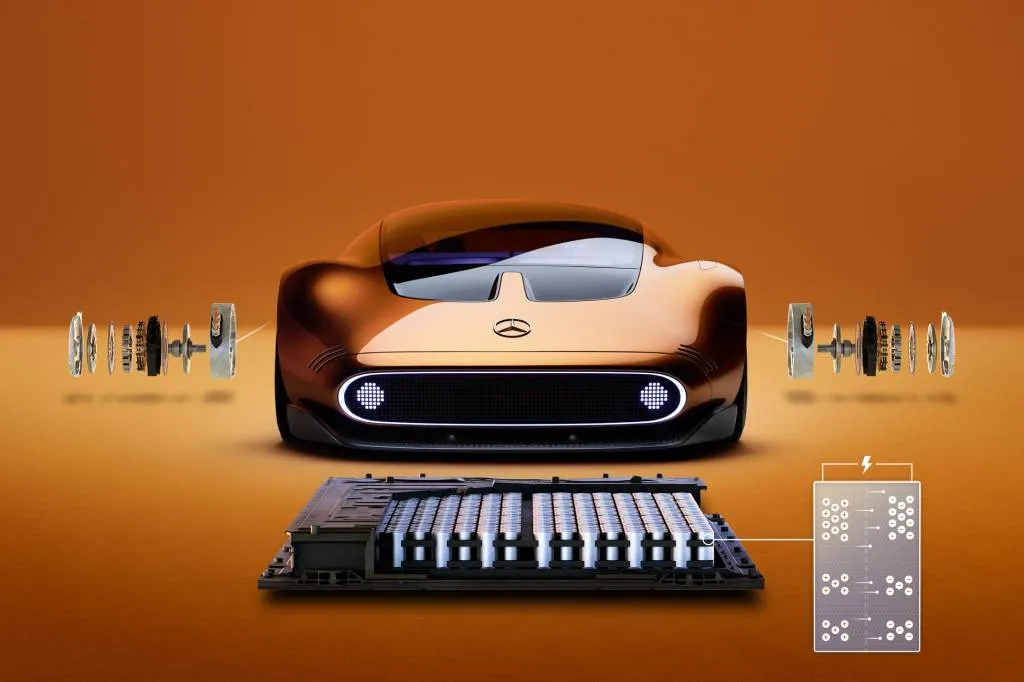
Mercedes-Benz Vision One-Eleven concept
The exterior of the Vision One-Eleven concept may borrow liberally from the original C111s, but it also introduces a more extreme application of Mercedes' One-Bow design form. From the low front end to the muscular rear, a smooth bow-like shape when viewed from the side gives the 46-inch tall concept a solid, almost sculptural look and feel.
Entry to the cabin is via a pair of gullwing doors, which again is an element borrowed from the original C111s, as well as the iconic 300SL gullwing sports car. And instead of the race car-like appearance most supercars adopt for their interiors, the Vision One-Eleven features a more lounge-like feel. Mercedes said this choice of design reflects a future where even supercars will be able to drive on their own. Occupants will want a comfy environment when they're not focused on driving.
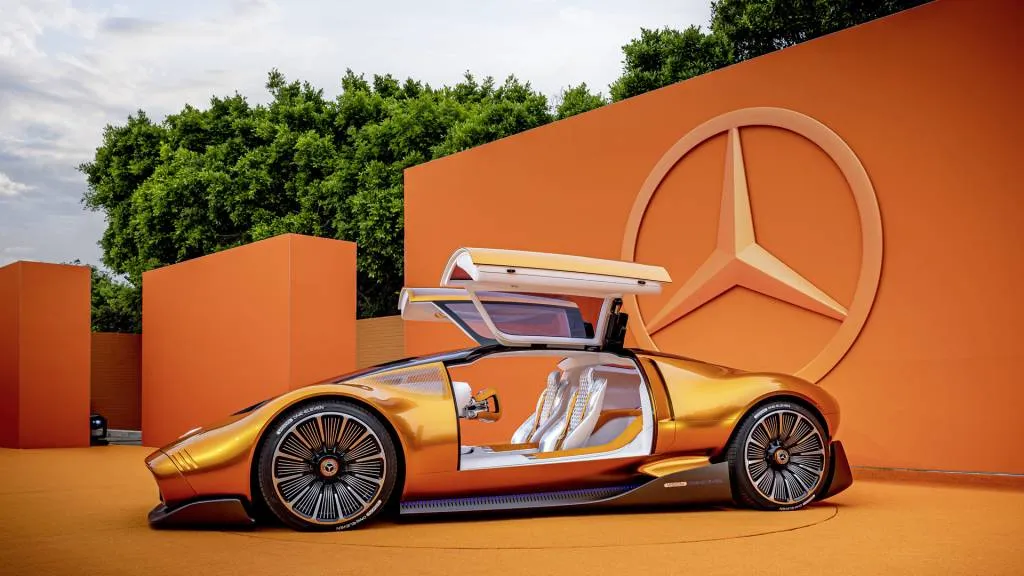
Mercedes-Benz Vision One-Eleven concept
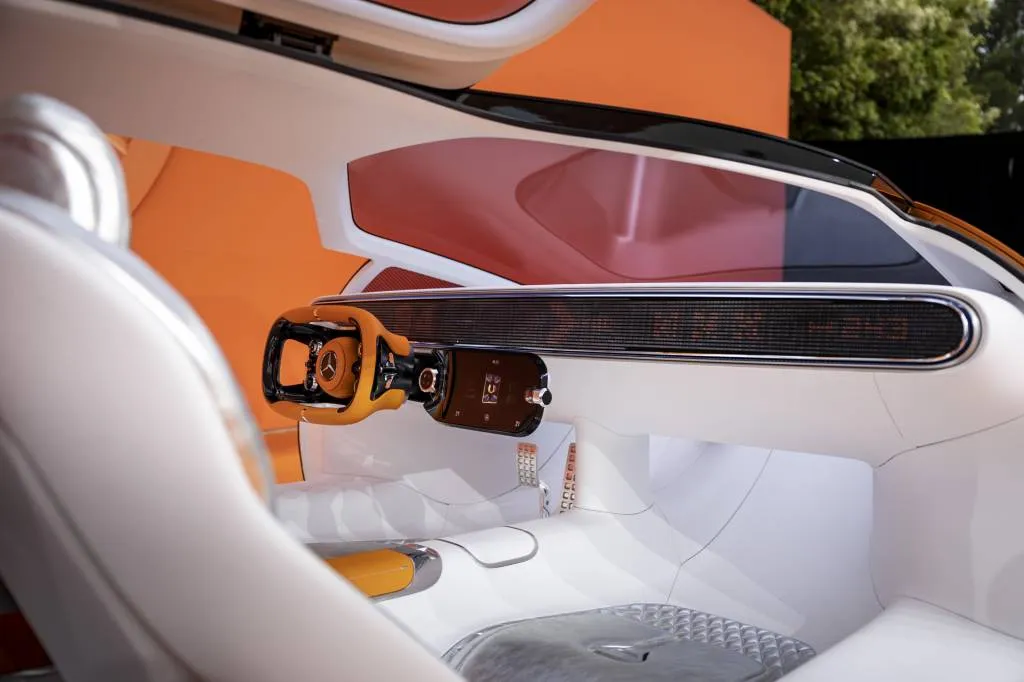
Mercedes-Benz Vision One-Eleven concept
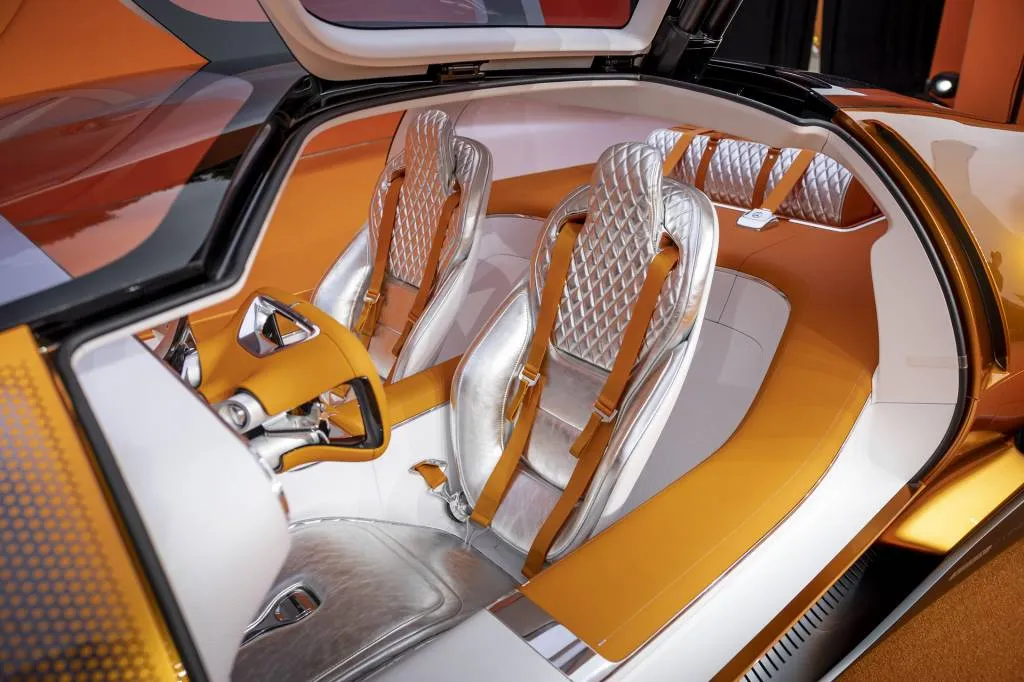
Mercedes-Benz Vision One-Eleven concept
Mercedes said the colors and materials used in the concept are a glimpse of future luxury. Bright colors attract immediate attention, while recycled materials deliver a sense of sustainability.
Like the original C111 concepts, the Vision One-Eleven isn't intended for production, though elements of its design and technology are likely to filter down to future Mercedes cars bound for the showroom.
